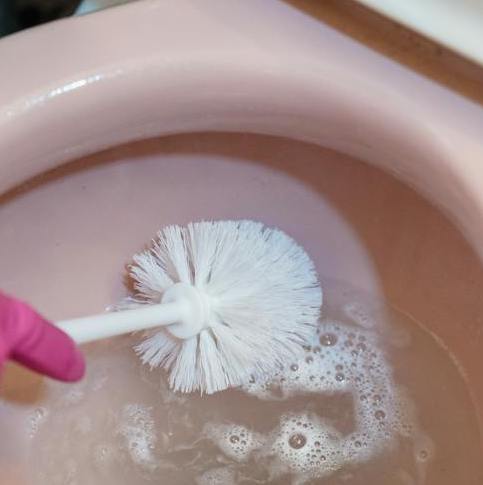Introducing plants into this personal space can transform it into a vibrant, soothing haven. However, when you share this space with a roommate, the decision to bring in greenery isn’t just yours alone. It becomes a collaborative venture, one that requires consideration, communication, and cooperation.
The allure of indoor plants is undeniable. They not only beautify our living spaces but also contribute to our well-being, purifying the air and providing a sense of calm. But before you venture into your local nursery or start browsing online plant shops, pause to consider the dynamics of your shared living situation. From respecting each other’s preferences to understanding the practicalities of plant care, there are several nuances to navigate.
This article delves into the intricate balance of integrating plants into a shared living space. We’ll explore the importance of aligning with your roommate’s preferences, creating a mutually agreeable plant care plan, and considering various factors like space, maintenance, and the health benefits of plants. Whether you’re a seasoned plant enthusiast or new to the world of indoor gardening, these insights will guide you in creating a harmonious and green shared home.

Table of Contents
Plants in Shared Living Spaces: Pros and Cons
When considering bringing plants into a shared living space, it’s crucial to evaluate both the advantages and disadvantages. This helps ensure that the decision is mutually beneficial and respects the preferences and needs of all roommates.
Pros:
- Aesthetic Appeal: Plants can significantly enhance the visual appeal of any living space. They add a touch of nature, color, and vitality, making the environment more welcoming and pleasant.
- Improved Air Quality: Many plants are known for their air-purifying qualities. They can absorb toxins and emit oxygen, improving the overall air quality in the apartment.
- Mental Health Benefits: Studies have shown that being around plants can reduce stress, anxiety, and depression. They create a calming and relaxing environment that’s beneficial for mental wellbeing.
- Encourages Responsibility: Taking care of plants can foster a sense of responsibility and routine. It’s a shared activity that roommates can bond over.
- Noise Reduction: Plants can act as natural sound barriers. They absorb, diffract, and reflect sound, which can be particularly beneficial in noisy urban environments.
Cons:
- Allergies and Health Concerns: Some people may have allergies to certain plants, which can lead to discomfort or health issues. It’s important to consider this before introducing plants into a shared space.
- Maintenance and Care: Plants require regular care, including watering, pruning, and sunlight. This can be a commitment that not all roommates are willing or able to make.
- Space Limitations: In smaller apartments, space is a premium. Large plants or too many plants can make a space feel cluttered and constrained.
- Potential for Mess: Soil, water, and fallen leaves can create a mess. This might be an issue for roommates who prefer a more pristine living environment.
- Pests and Insects: Plants can sometimes attract insects and pests, which could be a nuisance in a shared living space.
In conclusion, while plants can offer numerous benefits, it’s important to weigh these against potential drawbacks. An open and honest conversation with roommates about the pros and cons can lead to a decision that everyone is comfortable with, ensuring a harmonious living environment.
Factors to Consider Before Bringing Home Plants
Introducing plants into your living space can be a delightful way to spruce up your home, but it’s not a decision to be taken lightly, especially in a shared living environment. Here are some crucial factors to consider before bringing home plants:
- Space Considerations:
- Available Space: Assess the available space in your apartment. Large plants or an excessive number of plants can overcrowd the space, making it feel cluttered.
- Sunlight and Ventilation: Different plants have different needs in terms of sunlight and air circulation. Ensure you have suitable spots for the plants you are considering.
- Roommate Preferences and Allergies:
- Allergies: Some people are allergic to certain types of plants. It’s important to confirm that none of your roommates have these allergies.
- Aesthetic Preferences: Your roommate might have specific preferences or objections regarding the appearance or scent of certain plants.
- Maintenance and Care:
- Time Commitment: Consider whether you and your roommates have the time and willingness to regularly care for the plants. This includes watering, pruning, and other maintenance tasks.
- Knowledge and Experience: Some plants require more specialized care than others. Assess your knowledge and willingness to learn about the needs of the plants you’re considering.
- Financial Implications:
- Initial Investment: Some plants, especially larger or more exotic ones, can be quite expensive. Additionally, you might need to invest in pots, soil, and other gardening supplies.
- Ongoing Costs: Consider the ongoing costs of plant care, including fertilizers, pest control products, and potentially higher water bills.
- Lease Agreements and Landlord Policies:
- Restrictions: Some lease agreements or landlords might have restrictions regarding plants, especially if they could potentially cause damage (e.g., water damage from overwatering).
- Plant Lifecycle and Longevity:
- Growth and Development: Understand how your plant will grow over time. Some plants might outgrow their initial space or require repotting and more space.
- Lifespan: Consider the lifespan of the plants. Some plants might be seasonal or have a short lifespan, requiring replacement.
- Potential Risks:
- Pests and Diseases: Plants can sometimes attract pests or be prone to diseases, which might require additional care or could risk spreading to other plants.
- Pet Safety:
- Toxicity to Pets: If you or your roommate have pets, it’s essential to ensure that the plants you bring in are not toxic to them.
Taking the time to carefully consider these factors can help ensure that adding plants to your shared living space enhances the environment and relationships within it, rather than causing friction or issues.
Roommates’ Preferences and Plant Choices
When it comes to integrating plants into a shared living space, aligning with your roommates’ preferences and making collective plant choices can significantly influence the harmony and aesthetic of your home. Here’s how to navigate this collaborative process:
- Open Communication:
- Discuss Preferences: Initiate a conversation about each roommate’s likes, dislikes, or concerns regarding plants. Some may prefer flowering plants, while others might lean towards foliage.
- Express Concerns: Encourage everyone to voice any concerns, such as allergies, fear of insects, or dislike for certain scents.
- Understanding Individual Lifestyles:
- Care Commitment: Understand each roommate’s lifestyle and willingness to participate in plant care. Some may be enthusiastic about gardening, while others might prefer low-maintenance plants.
- Schedules and Responsibilities: Discuss and agree upon who will be responsible for watering, pruning, and other maintenance tasks, especially during vacations or busy periods.
- Creating a Shared Vision:
- Thematic Cohesion: Decide on a theme or aesthetic for your shared space. Whether it’s a tropical vibe, a desert feel, or a lush green look, ensuring that the plant choices align with the shared vision is crucial.
- Functionality and Well-being: Consider plants that not only look good but also contribute to the well-being of the inhabitants, such as air-purifying plants or those known for their calming effects.
- Compromising and Accommodating:
- Finding Middle Ground: If opinions differ, find a compromise. This might mean mixing different types of plants or agreeing on certain areas where individual preferences can be expressed.
- Trial Periods: If there’s uncertainty about a particular plant, consider a trial period to see how it fits into the living space and how everyone feels about it.
- Educating and Sharing Knowledge:
- Plant Care Education: Share knowledge about plant care, especially if one roommate is more experienced. This can be an opportunity for learning and bonding.
- Resource Sharing: Pool resources for plant care, such as sharing watering cans, soil, or fertilizers. This can also be an opportunity to invest in better quality or more sustainable care products collectively.
- Respecting Personal Space:
- Private vs. Common Areas: Respect each other’s personal space. Some roommates might prefer having plants in their own rooms, while others enjoy communal greenery.
- Boundaries and Limits: Set clear boundaries regarding where plants can be placed, especially if they might encroach on someone’s personal space or common areas used for other purposes.
By considering each roommate’s preferences and making collective decisions, you can ensure that the introduction of plants into your shared living space is a positive, enriching experience that enhances your living environment and strengthens your relationship.
Creating a Plant Care Plan
Incorporating plants into your shared living space is not just about aesthetics; it’s also about responsibility and care. A well-thought-out plant care plan is essential to ensure the health of the plants and maintain harmony among roommates. Here’s how to create an effective plant care plan in a shared living environment:
- Assessment of Plant Needs:
- Research: Understand the specific needs of each plant in your shared space. This includes light requirements, watering frequency, humidity preferences, and any special care (e.g., fertilizing or pruning).
- Documentation: Create a care sheet or guide for each plant, listing its specific needs. This can be a shared digital document or a physical guide placed near the plant.
- Division of Responsibilities:
- Scheduling: Set up a schedule for plant care tasks based on each plant’s needs and each roommate’s availability. Use a shared calendar or a plant care app where tasks can be checked off upon completion.
- Task Allocation: Divide tasks according to preferences and abilities. Some roommates may prefer watering, while others might be better at pruning or monitoring plant health.
- Creating a Shared Resource Pool:
- Supplies: Pool resources to purchase supplies like soil, fertilizers, pots, and tools. This ensures that you have everything needed for plant care and can bulk buy if it’s more economical.
- Budgeting: Agree on a budget for plant-related expenses. This includes initial purchases and ongoing costs like replacement plants or specialty care items.
- Communication and Updates:
- Regular Check-ins: Have regular discussions about the plants’ health and any care-related issues. This can be a quick weekly check-in or a more formal monthly meeting.
- Feedback Loop: Create a system where roommates can provide feedback or raise concerns about the plants or the care plan. This ensures that any issues are addressed promptly and that the care plan remains effective and mutually agreeable.
- Education and Learning:
- Learning Together: Consider learning more about plant care as a group. This could involve attending a workshop, watching online tutorials, or reading books on horticulture.
- Sharing Knowledge: Encourage roommates to share tips, interesting facts, or new findings about plant care. This not only improves the care of your plants but also makes the process more engaging and fun.
- Contingency Planning:
- Backup Caregivers: Have a plan for plant care during vacations or periods when one or more roommates are unavailable. This could involve assigning a temporary caregiver or using plant-sitting services.
- Dealing with Plant Issues: Be prepared to deal with common plant issues, such as pests or diseases. Know when it’s time to isolate a plant, apply treatment, or in the worst case, replace it to prevent problems from spreading.
By creating a structured and collaborative plant care plan, you and your roommates can enjoy the benefits of a green, vibrant living space without any of the potential stress or misunderstandings that can arise from shared responsibilities.
FAQs about Bringing Plants into a Shared Living Space
Do I really need to ask my roommate before bringing home a plant?
Yes, it’s considerate and respectful to discuss it with your roommate first. Plants can significantly alter the living space, and your roommate might have preferences or allergies that need to be taken into account.
Can plants really help improve our living environment?
Absolutely. Beyond their visual appeal, plants can create a more inviting and relaxing atmosphere. They can also improve air quality and potentially enhance mental well-being.
See Related Posts

How to Evict a Roommate Not on the Lease

What Household Items To Share With Your Roommates

Understanding When Your Living Situation With Roommates No Longer Works

Navigating Roommate Living Without Formal Agreements

What to do if your roommate breaches the roommate agreement?

My Roommates Won’t Clean the Bathroom

What do I need to know before lending my roommate money?

Unspoken Roommate Rules in Indian Hostels: A Comprehensive Guide

Roommate Constantly Talks to Themself


